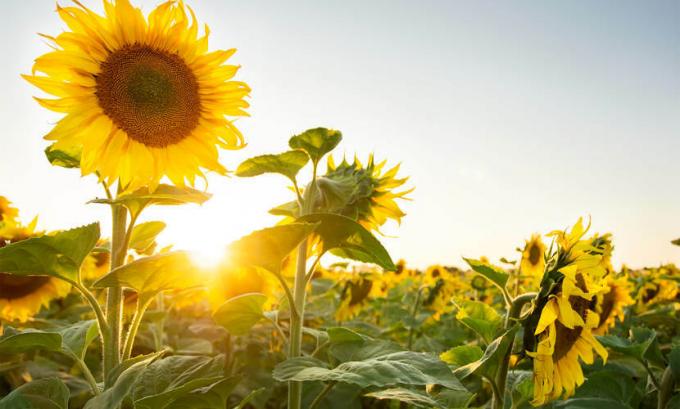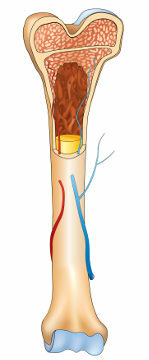At plants are living beings that are part of the KingdomPlante or kingdom of vegetables. They stand out for being formed by many cells and, for the most part, make the call photosynthesis, that guarantees the production of its own food (organic molecules), which is necessary for its growth and development. Next, we'll talk a little more about plants, such as their characteristics and usefulness.
plant characteristics
When we observe the kingdom Plantae, we notice that it is composed of very different organisms. Some plants, for example, have a size of a few centimeters, such as mosses, while others, such as the sequoia, can reach more than 80 meters in height. In addition to the difference in size, these living beings are differentiated by the presence or absence of conducting tissues, by the presence or absence of flowers, for the differences between their colors, and for other characteristics.
Although there are such different organisms within the same group, all plants have some basic characteristics that allow them to be classified in this way. See these features below:

They are multicellular organisms, that is, formed by more than one cell. Like animals, these organisms have cells that form tissues, and these tissues form what are called organs.
haveeukaryotic cells, that is, cells whose nucleus is membrane-bound. These are also highlighted by the presence of a cell wall rich in cellulose and by the presence of vacuole and plastids. The cell wall is externally disposed to the plasma membrane and has as one of its functions to prevent the rupture of this membrane. The vacuole is a structure that is related to a number of functions, such as maintaining the cell's pH. Finally, we have the plastids, which are actually a group of organelles in which thechloroplasts, related to photosynthesis.
are beings photosynthesizers, able to produce their own food, being therefore autotrophic. It is noteworthy that there is an exception to this rule. The lead vine is a plant that does not carry out photosynthesis and obtains the necessary nutrients for its survival from a host plant.

Read too: Is it dangerous to sleep with plants in the bedroom?
Main parts of a plant
In general, we can say that most plants have as basic parts: a source, O stalk and the sheets. Note below some of the main characteristics of each of these portions:
Source: it is the structure responsible for guaranteeing the absorption of water and nutrients from the soil and also guaranteeing that the plant settles in the substrate. Some roots also act by accumulating substances, such as carbohydrates, helping to remove substances from another plant (haustories) and ensuring aeration of plants that live in swampy environments (pneumatophores).
Stalk: it is a plant organ related to two main functions: the conduction of substances and the support of leaves and reproductive structures. Some stalks are adapted to store substances, as is the case of the potato stalk.
Leaf: it is a structure that functions as a photosynthetic organ in most vascular plants (which have conducting vessels). Its role, however, is not restricted only to ensuring the realization of photosynthesis, being related, for example, to the processes of transpiration and breathing. It is also worth noting that some sheets are modified and perform other functions. This is the case of thorns of cacti, which guarantee protection and prevent excessive loss of water, and tendrils, that guarantee support to the plant.
Not all plants have seed, flower and fruit. The presence of seeds is observed only in plants of the gymnosperm and angiosperm group, while the presence of flower and fruit is seen only in angiosperm plants. |
Read too:Plant movement — plants don't walk, they do move! know how.
Plant Functions
Plants are essential organisms for the planet's balance. These constitute the base of food chain (producers) of several ecosystems, serving as food for primary consumers. They are even part of the human diet, being common in our diet the fruits, vegetables and greens.
Plants are also shelter for a series of living beings, such as some animals. Furthermore, they are related to other important functions, such as release of oxygen to the atmosphere, carbon dioxide capture, Besides avoid erosionand help regulate the relative humidity of the air.

Plants also have important economic functions. Wood, for example, is used in manufacture of houses and furniture, and cellulose, a product obtained from plants, is used in papermaking. We must not forget that plants offer important products for the manufacture of medicines and cosmetics.
plant classification
We canclassify the plants, for didactic purposes, in four basic groups: bryophytes, pteridophytes (seedless vascular plants), gymnosperms and angiosperms. See below the main characteristics of each of these groups:
Bryophytes: they do not have sap-conducting vessels and, therefore, they are called avascular plants. Due to the absence of these pots, these plants are unable to guarantee themselves great heights. In these plants, roots, stems and true leaves are not observed, nor are seeds, fruits and flowers found. Mosses are examples of bryophytes.

Pteridophytes or seedless vascular plants: we have so-called conductive vessels. Plants in this group have roots, stems and leaves, and do not have seeds, flowers and fruits. Examples of pteridophytes are ferns and ferns.

gymnosperms: they are vascular plants and stand out for the presence of seeds that are not surrounded by fruit. As representatives of gymnosperms, we can mention the araucarias and the pine trees.

Angiosperms: they have flowers and fruits, structures absent in other plant groups. These plants stand out for having a large number of known species (about 250,000 species) and corresponding to about 90% of all plant species. Avocado, rose, lily, rice and soy are examples of angiosperms.

If you are curious about this topic, read our text:plant classification.
plant names
There are thousands of plant species on our planet, and some are well known to all of us. Check out the names of some plants below:
Plants from A to Z |
|
avocado tree bromeliad cashew tree Night's Lady Mate herb FIG tree Ginger Yellow Ipe jabuticaba tree Kajuru Orange Apple tree water lily Orchid pequi tree stone breaker rose bush Willow tree Tomato uvaia bridal veil tree fern Welwitschia Yohimbe Zedoária |
Also access:Carnivorous plants



